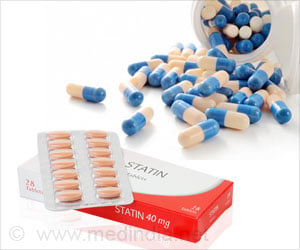Treatment with statins is recommended for all adults 21 years or older with an LDL-C of 190 mg/dL or greater, as it reduces the risk of death.

- Adults younger than 40 years of age with elevated LDL levels were not prescribed statins.
- Even with more severe elevations in LDL-C levels - 250 mg/dL and 300 mg/dL, 25 percent of patients were not prescribed a statin.
- Lowering LDL cholesterol is a modifiable risk factor for developing premature cardiovascular disease.
For the analysis, the researchers used a national clinical registry that encompasses data from inpatient and outpatient encounters from 360 medical centers in all 50 states, and included all patients between age 20 and 75 years who had both LDL-C and pharmacy records reported between July 1, 2013, and July 31, 2016.
Of the 2,884,260 patients with a qualifying lipid analysis, 3.8 percent had an LDL-C of l90 mg/dL or greater. The statin prescription rate for patients with severe dyslipidemia but without diabetes or established atherosclerotic cardiovascular disease (ASCVD) was 66 percent. Even with more severe elevations in LDL-C levels (LDL-C>250 mg/dL and LDL-C> 300 mg/dL), 25 percent of patients were not prescribed a statin.
Notably, statin prescription rates for patients with severe dyslipidemia varied sharply by age, with significantly lower rates in younger patients. Statins were prescribed in only 32 percent, 47 percent, and 61 percent of patients in their 30s, 40s, and 50s, respectively.
"This finding has particular relevance given the early onset of ASCVD and cardiovascular death observed in familial hypercholesterolemia studies from the pre-statin era," the authors write.
Reference
- Author name, Most younger adults with high LDL-C levels do not take a statin, JAMA Cardiology (2016).











